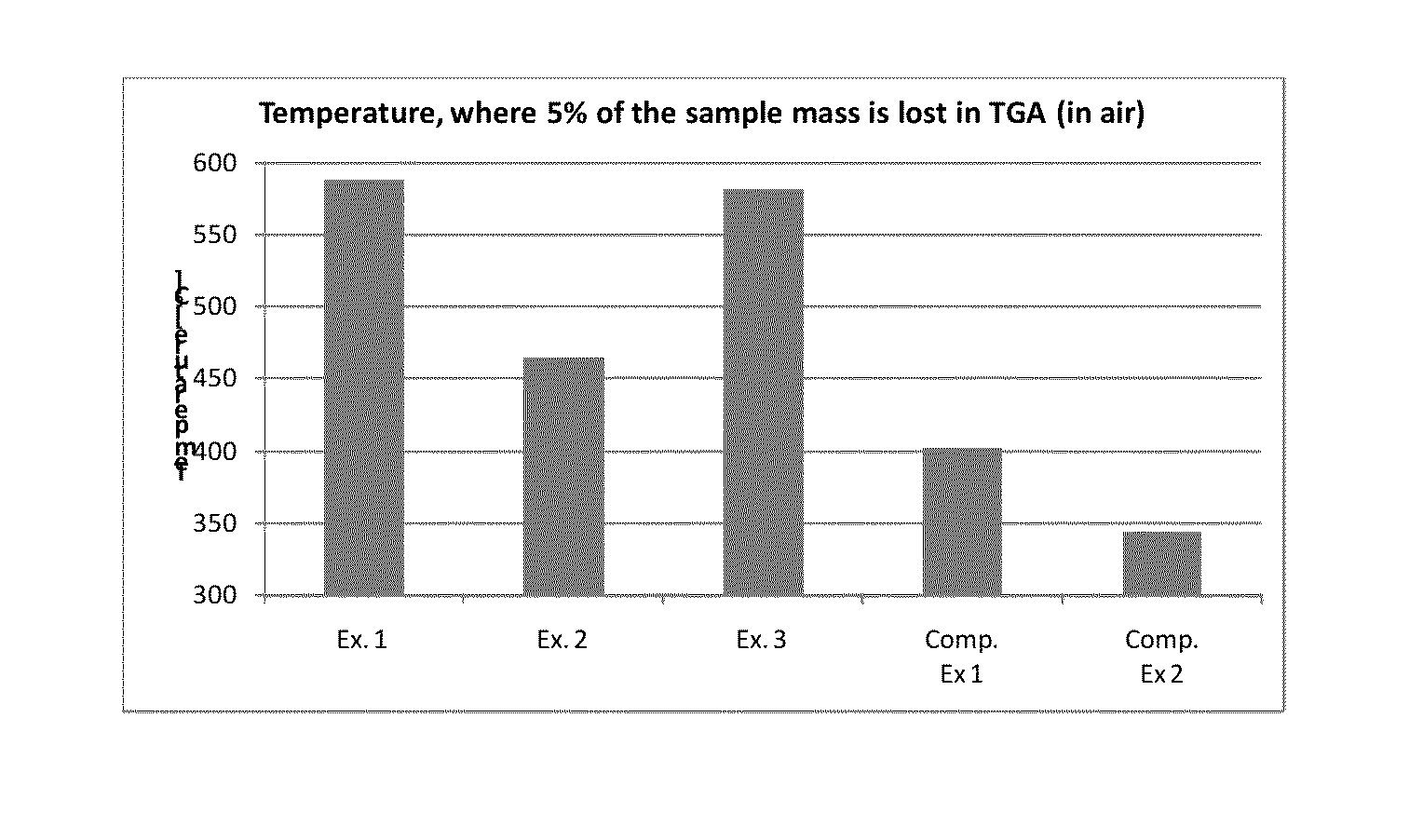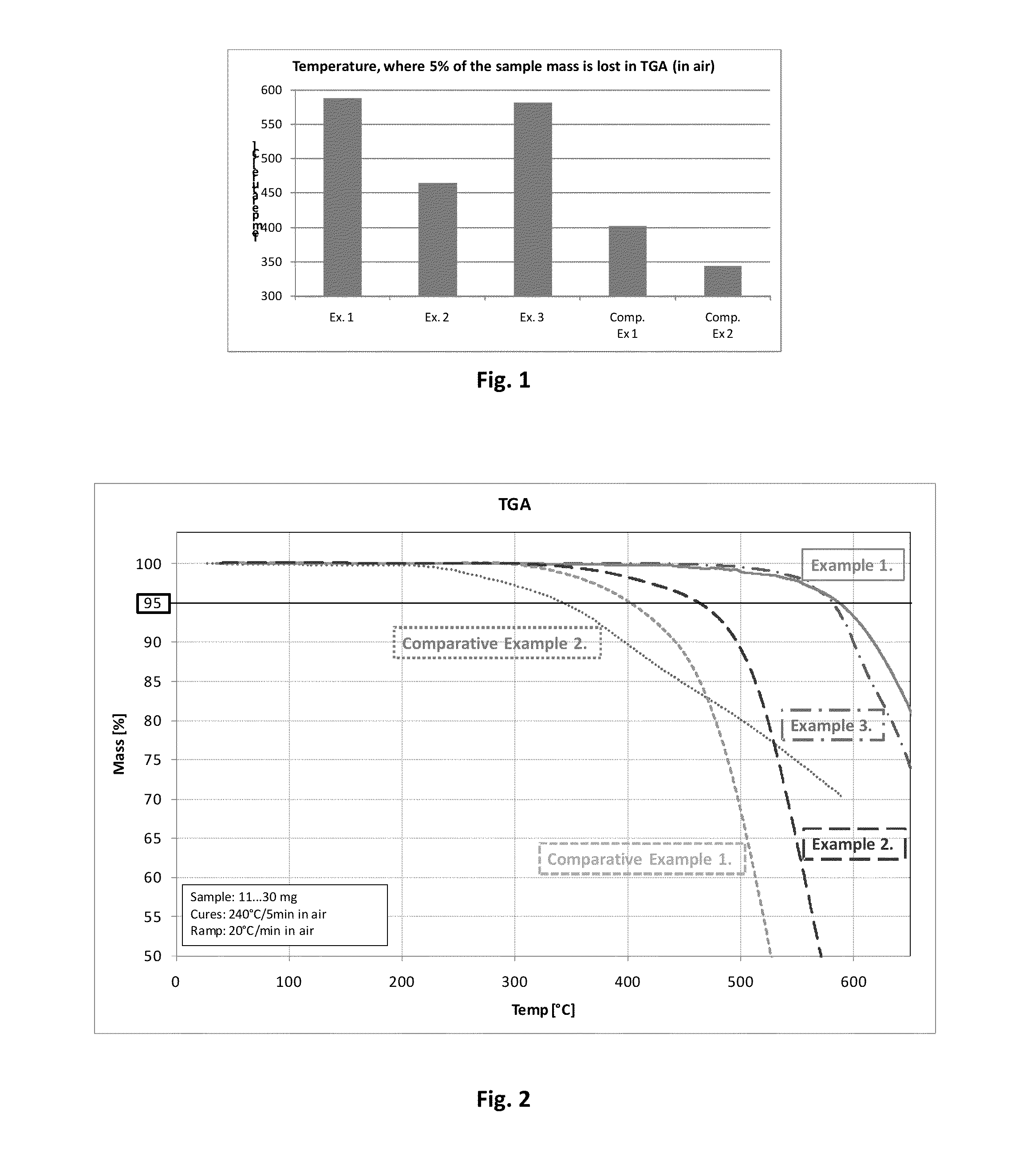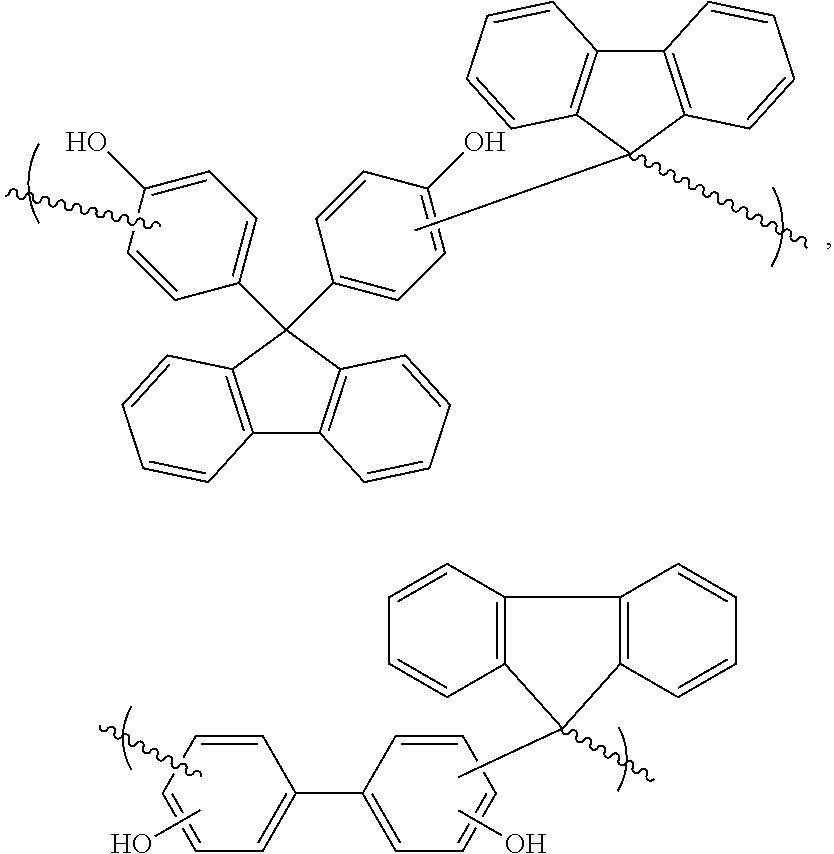Polymer composition and method of making the same
a polymer composition and composition technology, applied in the field of new polymer compositions, can solve the problems of reducing the thermal stability of polymers, poor solubility of common solvents, and high cost of acl, and achieves high carbon content, and excellent oxidative thermal stability
- Summary
- Abstract
- Description
- Claims
- Application Information
AI Technical Summary
Benefits of technology
Problems solved by technology
Method used
Image
Examples
example 1
[0061]Fluorenone (50.5 g), 4,4′-dihydroxybiphenyl (51.7 g) and diphenyl ether (10 g) were placed in a 250 mL rb flask, equipped with a magnetic stir bar and a glass stop cock having a PTFE sleeve. The flask was heated to +223° C. When the monomers melted to slurry, methane sulfonic acid (MSA, 0.6 mL, 70% water solution) was added in drop wise. The flask was quickly purged with argon, and the stop cock was loosely attached to the flask. The condensation reaction was allowed to proceed for 85 hours at +223° C. The reaction produced water, which escaped through between the joint and the loose stop cock as steam, while it was formed.
[0062]After the reaction, more diphenyl ether (100 mL) was added to facilitate proper stirring, and the content of the flask was cooled to room temperature. Triethylamine (2 g) was added to neutralize the MSA, after which the whole solution was poured into methanol (1 Lg). The polymer precipitated out, and was separated by filtration. It was dissolved in N-m...
example 2
[0064]Fluorenone (25 g) and 2,2′-dihydroxybiphenyl (25.8 g) were placed in a 100 mL rb flask with a magnetic stir bar, and a Dean-Stark apparatus was attached to the flask. The content of the flask was heated to 190° C., and MSA (0.1 mL) was added. The reaction was allowed to proceed for overnight, after which the polymer was dissolved in diphenyl ether (50 g). After cooling to rt, TEA (2 mL) was added, and the polymer was precipitated into methanol (1 L), followed by filtration and drying. Solid polymer (24 g) was obtained, with Mw / Mn=2,276 / 1,084 by GPC (in THF). Theoretical carbon content is 86.2%.
example 3
[0065]Fluorenenone (7.7 g), 9,9-bis(4-hydroxyphenyl)fluorene (15 g) and diphenyl ether (8 g) were melted in a rb flask at 170° C. MSA (0.1 mL) was added, and the flask was purged with argon. Temperature was gradually increased to 223° C., where it was kept for 66 hours. More diphenyl ether (15 g) was added to facilitate stirring while the flask was cooled to rt, after which TEA (0.5 mL) was added to neutralize the acid. The polymer was precipitated three times with PGMEA / methanol solvent / non-solvent pair. Light brown polymer (14.4 g) with Mw / Mn=2,360 / 1,401 was obtained by GPC (in THF). Low molecular fractions could be removed by washing the powder with acetone (borderline non-solvent).
[0066]This way, Mw / Mn=3,473 / 2,477 was obtained (yield ˜50%, film RI=1.671). Theoretical carbon content is 89.0%.
PUM
| Property | Measurement | Unit |
|---|---|---|
| dielectric constant | aaaaa | aaaaa |
| boiling point | aaaaa | aaaaa |
| boiling point | aaaaa | aaaaa |
Abstract
Description
Claims
Application Information
 Login to View More
Login to View More - R&D
- Intellectual Property
- Life Sciences
- Materials
- Tech Scout
- Unparalleled Data Quality
- Higher Quality Content
- 60% Fewer Hallucinations
Browse by: Latest US Patents, China's latest patents, Technical Efficacy Thesaurus, Application Domain, Technology Topic, Popular Technical Reports.
© 2025 PatSnap. All rights reserved.Legal|Privacy policy|Modern Slavery Act Transparency Statement|Sitemap|About US| Contact US: help@patsnap.com



